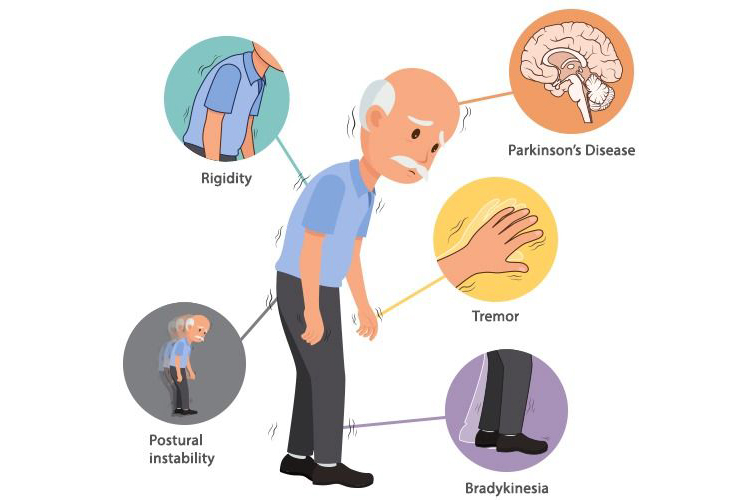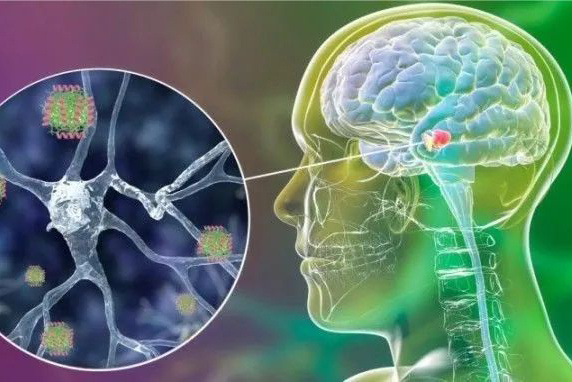Parkinsonism
Etiology
The precise cause of Parkinson's Disease remains unclear. Factors such as genetic predisposition, environmental influences, aging, oxidative stress, and the degeneration and death of PD dopaminergic neurons may play roles in the disease process.

Aging
Both the incidence and prevalence of PD increase with age. PD often manifests after the age of 60, suggesting an association with aging. Data indicate a progressive reduction in substantia nigra dopaminergic neurons in normal adults as they age. However, the prevalence of PD among individuals over 65 is not notably high, indicating aging as merely one of the risk factors for PD.
Genetic Factors
The role of genetic factors in the onset of PD is gaining recognition. Since the discovery of the first pathogenic gene for PD, alpha-synuclein (PARK1), in the late 1990s, at least six pathogenic genes have been associated with familial PD. However, only 5-10% of PD cases have a family history, with most being sporadic cases. Genetic factors are also just one of the many factors contributing to PD onset.
Environmental Factors
In the 1980s, American researchers led by Langston found that some drug users rapidly developed typical Parkinson's-like symptoms, and levodopa proved effective. They identified a neurotoxic substance, 1-methyl-4-phenyl-1,2,3,6-tetrahydropyridine (MPTP), in the synthetic heroin consumed by these individuals. MPTP is converted in the brain into the highly toxic 1-methyl-4-phenylpyridinium ion (MPP+), which selectively enters dopaminergic neurons of the substantia nigra, inhibiting mitochondrial respiratory chain complex I activity, triggering oxidative stress reactions, and leading to degeneration and death of dopaminergic neurons. Researchers proposed that mitochondrial dysfunction might be one of the pathogenic factors of PD. Subsequent studies in primary PD patients confirmed a selective decline in mitochondrial respiratory chain complex I activity within the substantia nigra. Some herbicides and insecticides share a chemical structure with MPTP. The discovery of MPTP led to the realization that certain MPTP-like chemicals in the environment could be factors contributing to PD. However, only a few of the drug users exposed to MPTP developed PD, suggesting that PD might result from multiple factors interacting.
Other Factors
In addition to aging and genetic factors, factors such as traumatic brain injury, smoking, coffee consumption, etc., may increase or decrease the risk of developing PD. Smoking is inversely associated with PD occurrence, a consistent conclusion across multiple studies. Caffeine also exhibits similar protective effects. Severe traumatic brain injury may potentially increase the risk of developing PD.
In summary, Parkinson's Disease may result from the interaction of multiple genetic and environmental factors.
Clinical Manifestation
The symptoms of Parkinson's Disease mainly include:
Tremors: Typically occurring at rest, such as hand tremors during rest.
Muscle Rigidity: Stiffness and resistance to passive movement leading to limited mobility.
Slow Movements: Movement becomes slow, and gait becomes small and shuffling.
Balance Impairments: A tendency for balance problems and a sense of instability.
Non-Motor Symptoms: These include depression, sleep disturbances, cognitive impairments, etc.
Examination
Neurological Examination: Physicians assess the status of the nervous system by examining the patient's motor abilities, posture, and balance.
Imaging Studies: Brain MRI or CT scans are used to rule out other possible issues causing the symptoms.
DaTscan: Nuclear medicine scans assist in evaluating the functionality of the dopamine system.
Diagnosis
The diagnosis of Parkinson's Disease relies on clinical symptoms and physical examinations, and there are typically no specific laboratory tests to confirm the diagnosis. Physicians may assess according to diagnostic criteria for PD (such as those by the UK Parkinson's Disease Society) for evaluation purposes.







